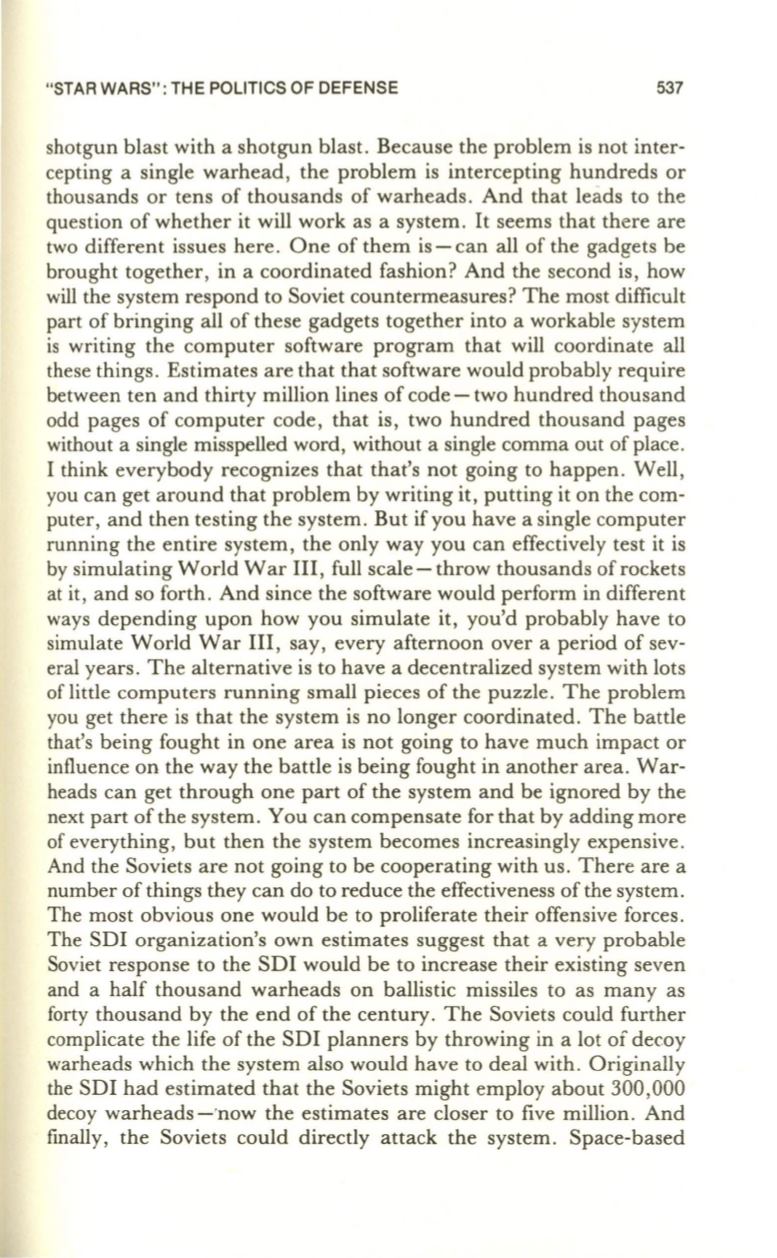
"STAR WARS": THE POLITICS OF DEFENSE
537
shotgun blast with a shotgun blast. Because the problem is not inter–
cepting a single warhead, the problem is intercepting hundreds or
thousands or tens of thousands of warheads. And that leads to the
question of whether it will work as a system. It seems that there are
two different issues here. One of them is - can all of the gadgets be
brought together, in a coordinated fashion? And the second is, how
will the system respond to Soviet countermeasures? The most difficult
part of bringing all of these gadgets together into a workable system
is writing the computer software program that will coordinate all
these things. Estimates are that that software would probably require
between ten and thirty million lines of code - two hundred thousand
odd pages of computer code, that is, two hundred thousand pages
without a single misspelled word, without a single comma out of place.
r
think everybody recognizes that that's not going to happen. Well,
you can get around that problem by writing it, putting it on the com–
puter, and then testing the system. But if you have a single computer
running the entire system, the only way you can effectively test it is
by simulating World War III, full scale - throw thousands of rockets
at it, and so forth. And since the software would perform in different
ways depending upon how you simulate it, you'd probably have to
simulate World War III, say, every afternoon over a period of sev–
eral years. The alternative is to have a decentralized system with lots
of little computers running small pieces of the puzzle. The problem
you get there is that the system is no longer coordinated. The battle
that's being fought in one area is not going to have much impact or
influence on the way the battle is being fought in another area. War–
heads can get through one part of the system and be ignored by the
next part of the system. You can compensate for that by adding more
of everything, but then the system becomes increasingly expensive .
And the Soviets are not going to be cooperating with us . There are a
number of things they can do to reduce the effectiveness of the system.
The most obvious one would be to proliferate their offensive forces .
The SDI organization's own estimates suggest that a very probable
Soviet response to the SDI would be to increase their existing seven
and a half thousand warheads on ballistic missiles to as many as
forty thousand by the end of the century. The Soviets could further
complicate the life of the SDI planners by throwing in a lot of decoy
warheads which the system also would have to deal with. Originally
the SDI had estimated that the Soviets might employ about 300,000
decoy warheads-'now the estimates are closer to five million . And
finally, the Soviets could directly attack the system. Space-based


